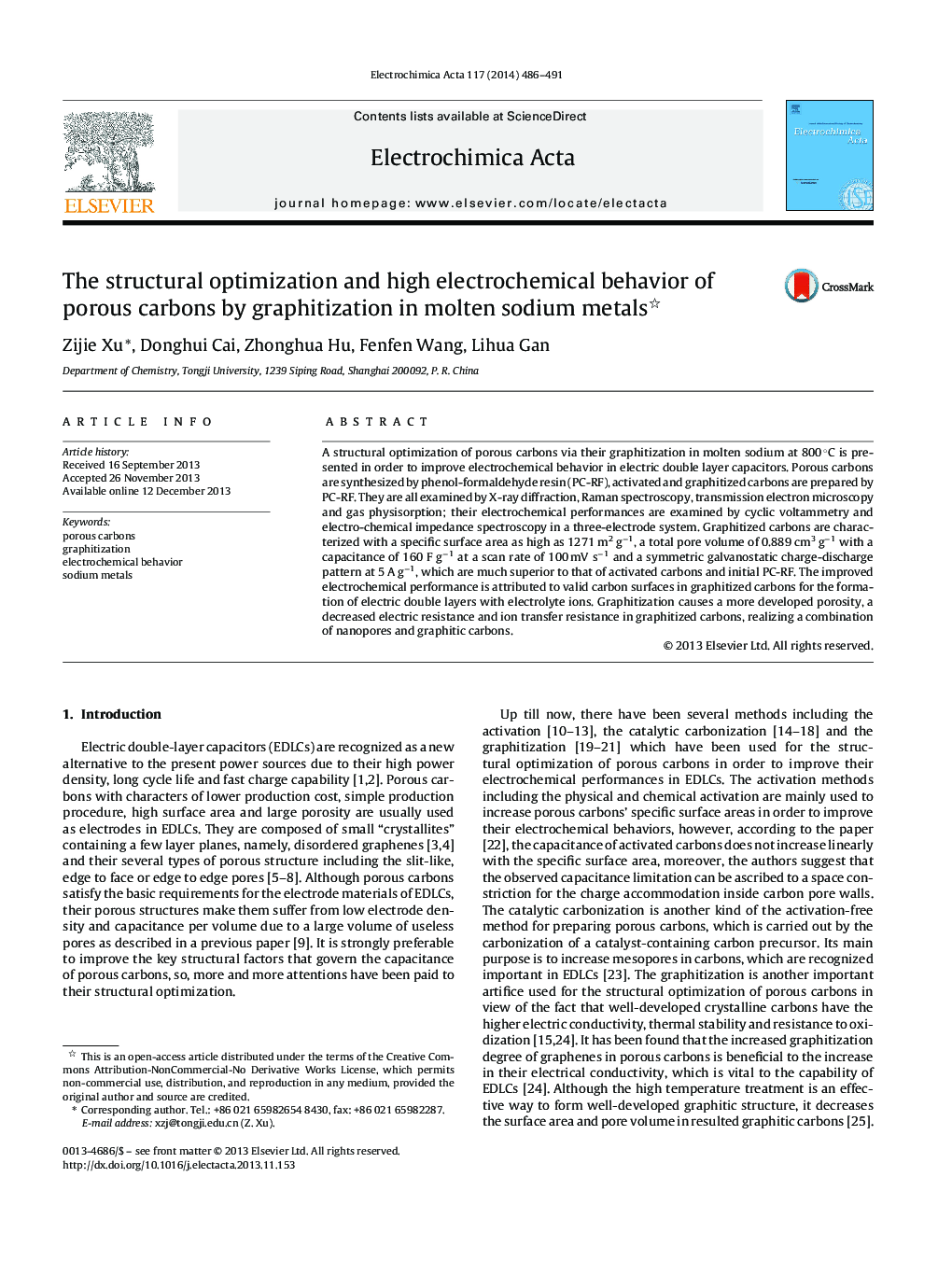| Article ID | Journal | Published Year | Pages | File Type |
|---|---|---|---|---|
| 186753 | Electrochimica Acta | 2014 | 6 Pages |
A structural optimization of porous carbons via their graphitization in molten sodium at 800 °C is presented in order to improve electrochemical behavior in electric double layer capacitors. Porous carbons are synthesized by phenol-formaldehyde resin (PC-RF), activated and graphitized carbons are prepared by PC-RF. They are all examined by X-ray diffraction, Raman spectroscopy, transmission electron microscopy and gas physisorption; their electrochemical performances are examined by cyclic voltammetry and electro-chemical impedance spectroscopy in a three-electrode system. Graphitized carbons are characterized with a specific surface area as high as 1271 m2 g−1, a total pore volume of 0.889 cm3 g−1 with a capacitance of 160 F g−1 at a scan rate of 100 mV s−1 and a symmetric galvanostatic charge-discharge pattern at 5 A g−1, which are much superior to that of activated carbons and initial PC-RF. The improved electrochemical performance is attributed to valid carbon surfaces in graphitized carbons for the formation of electric double layers with electrolyte ions. Graphitization causes a more developed porosity, a decreased electric resistance and ion transfer resistance in graphitized carbons, realizing a combination of nanopores and graphitic carbons.
